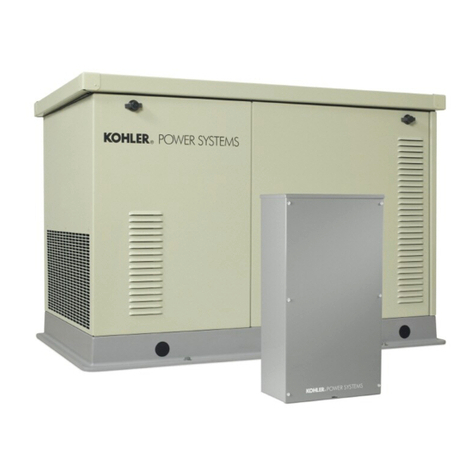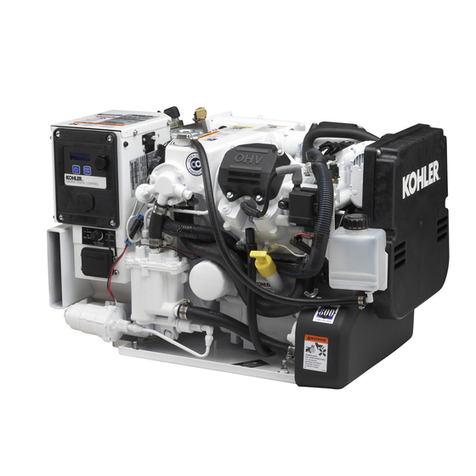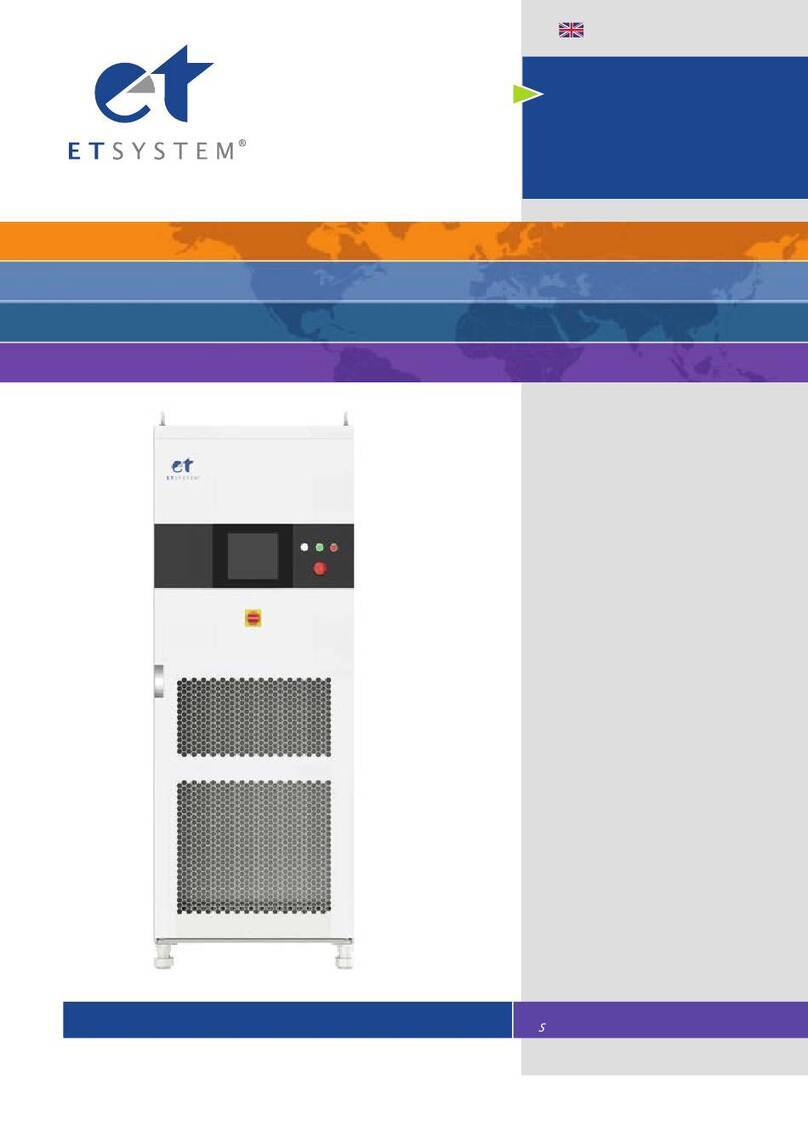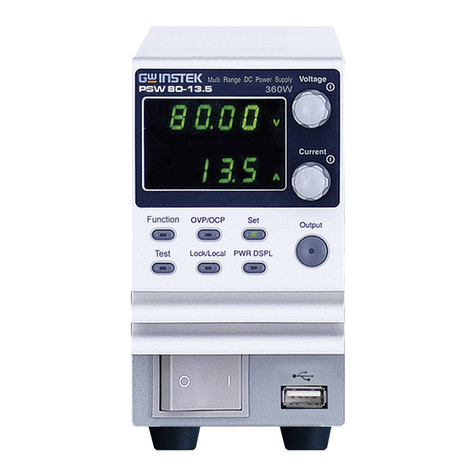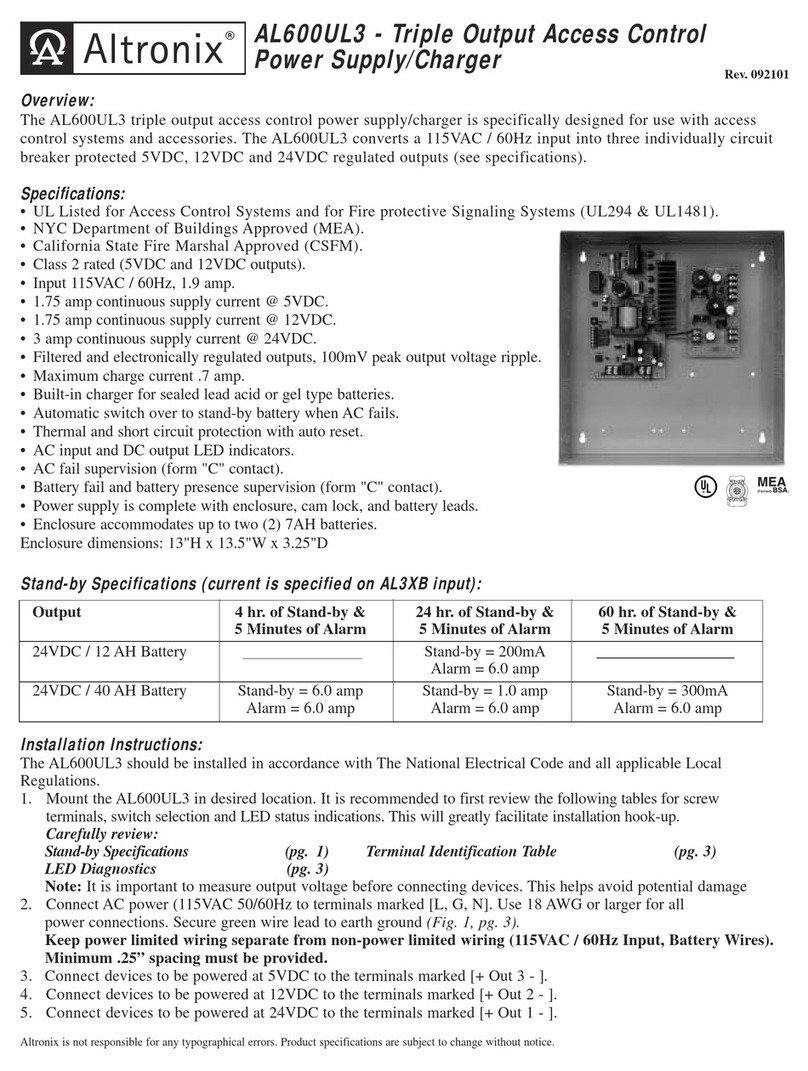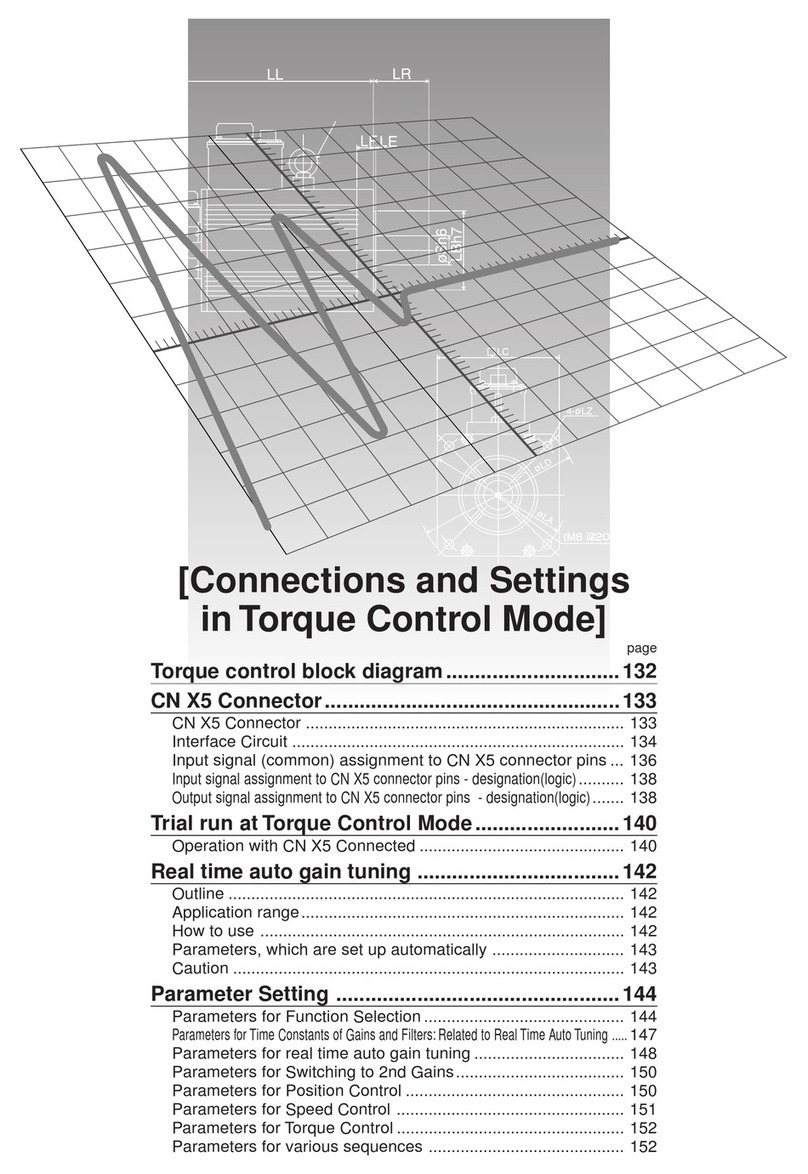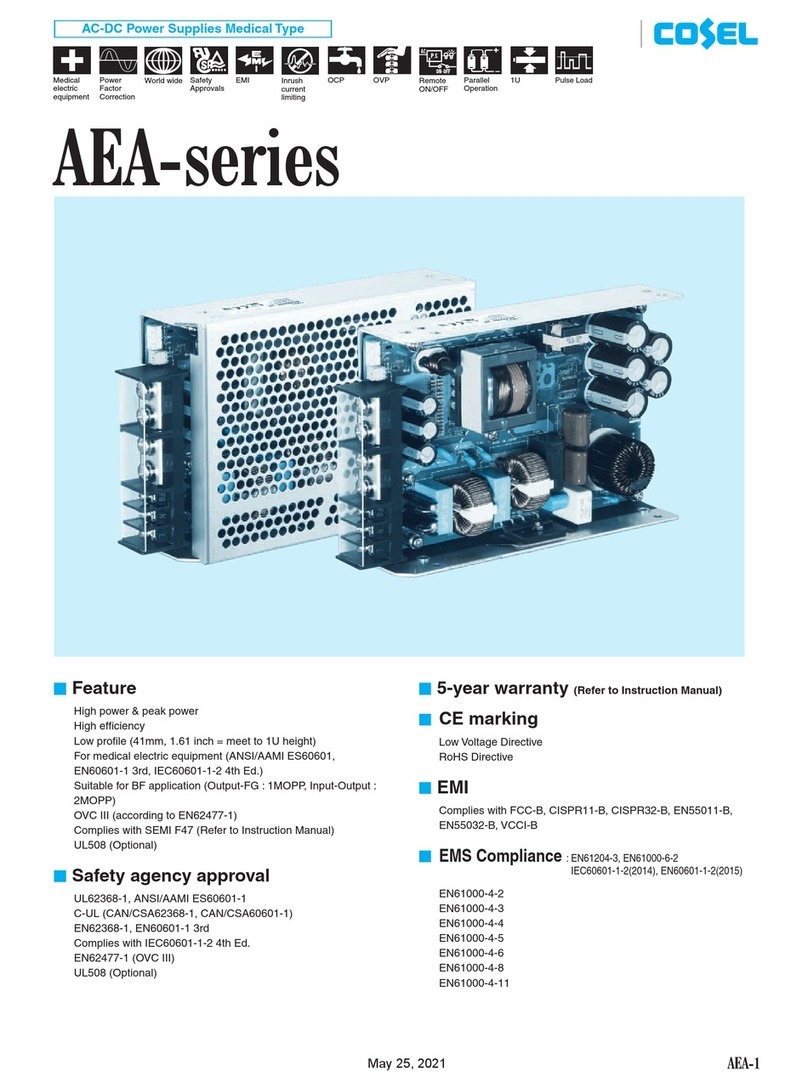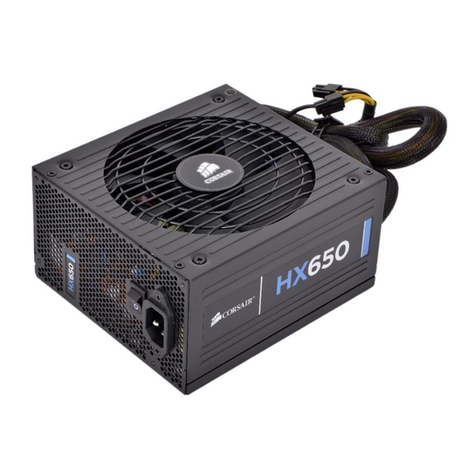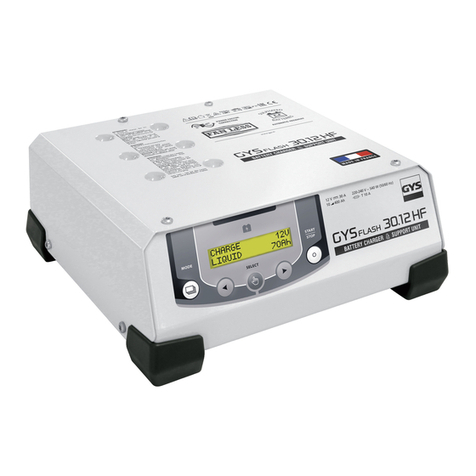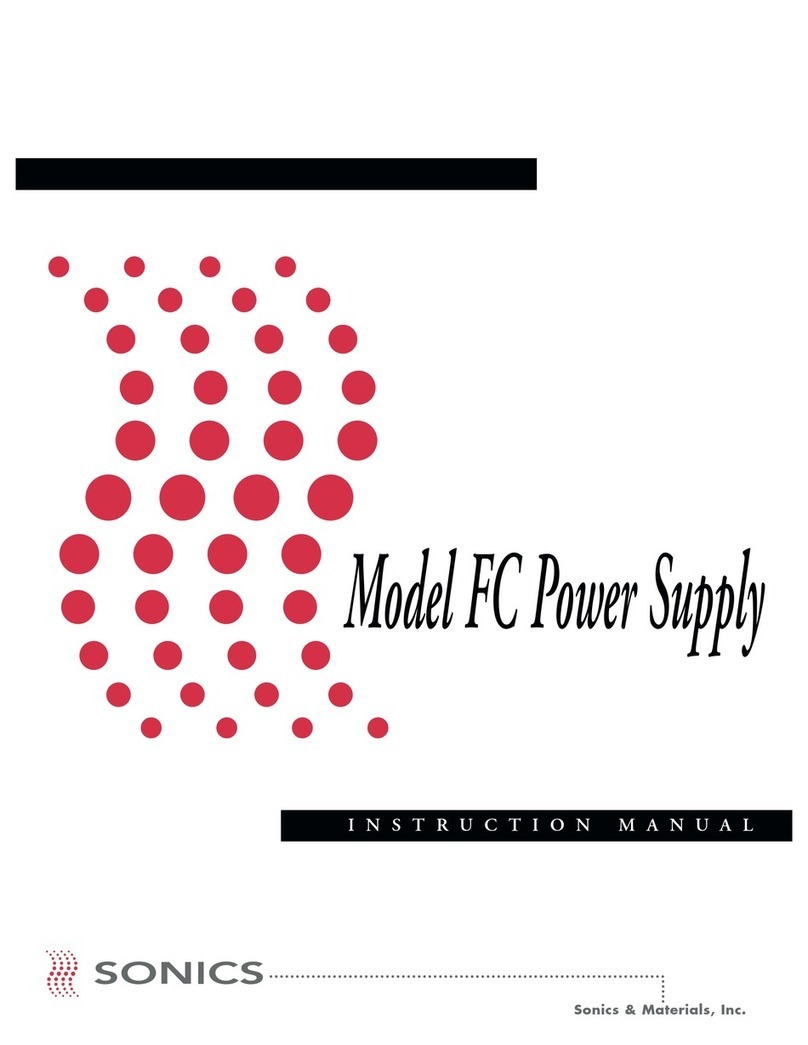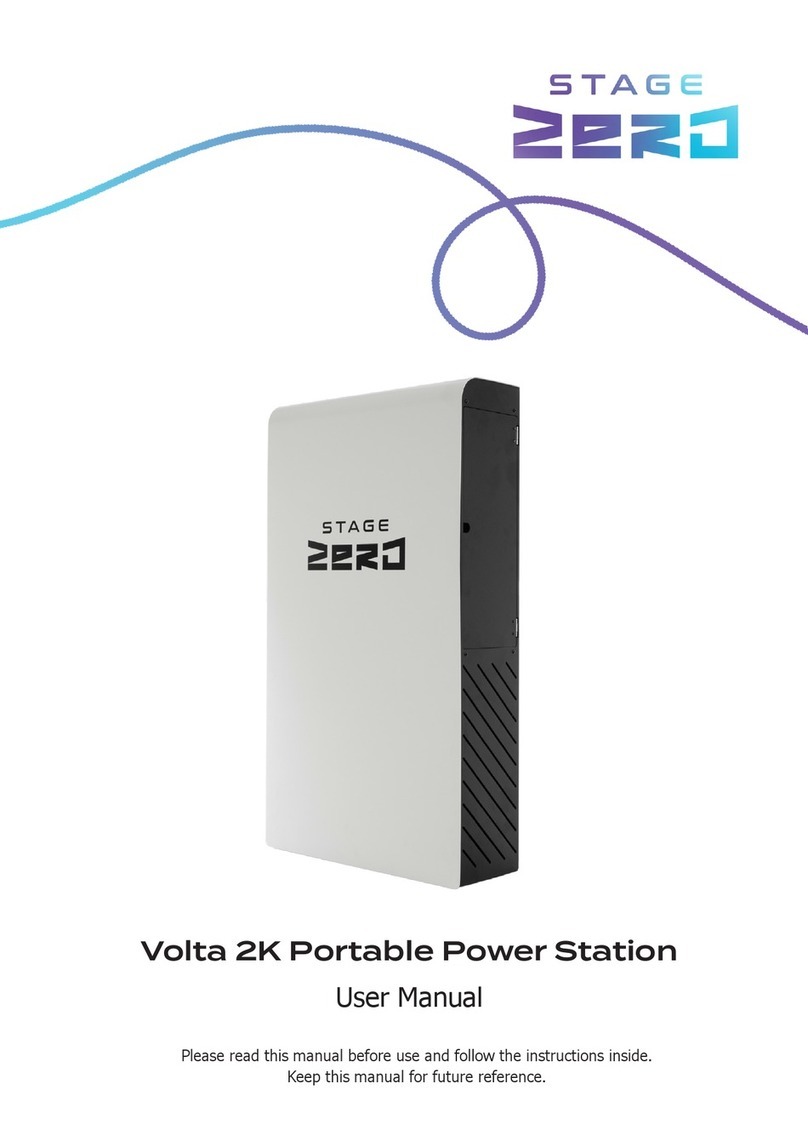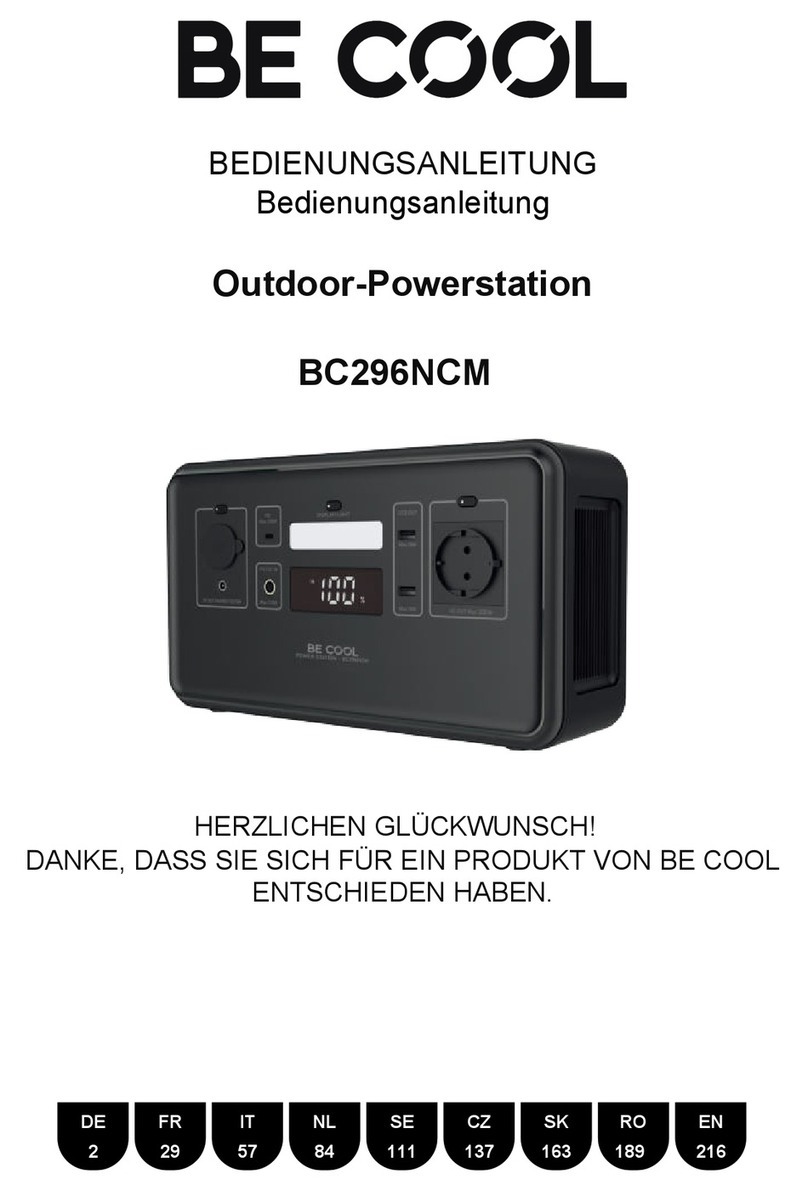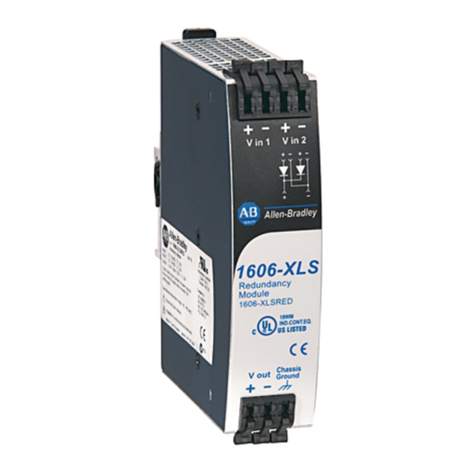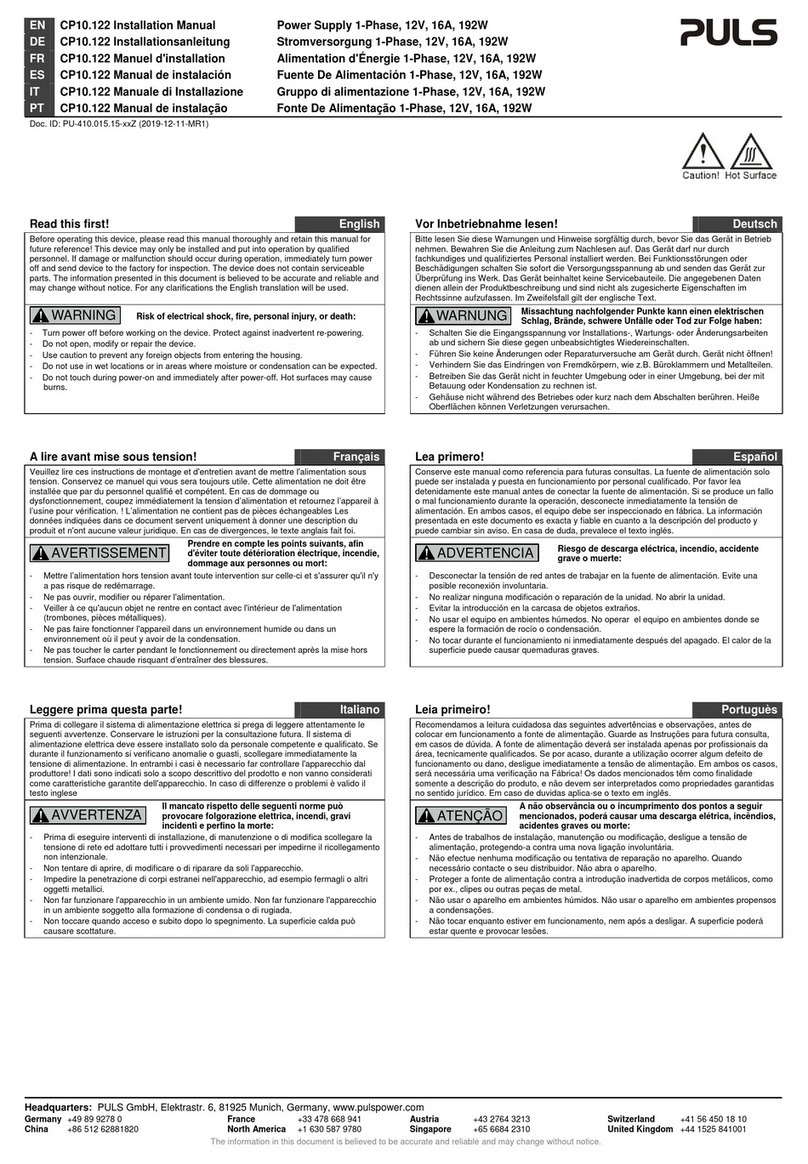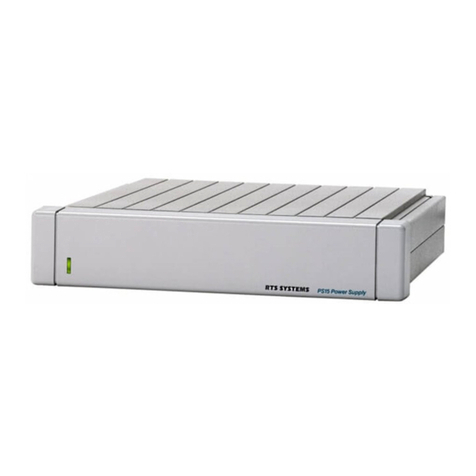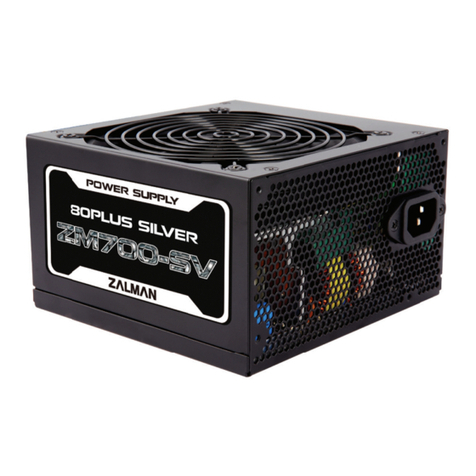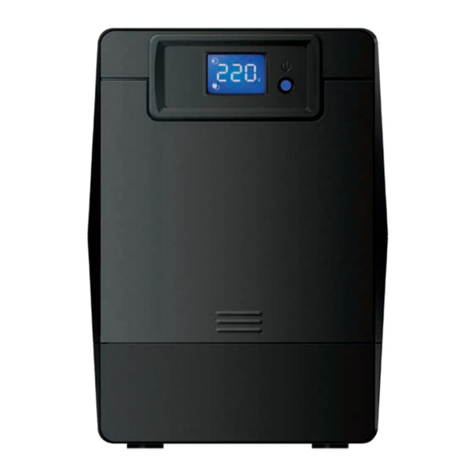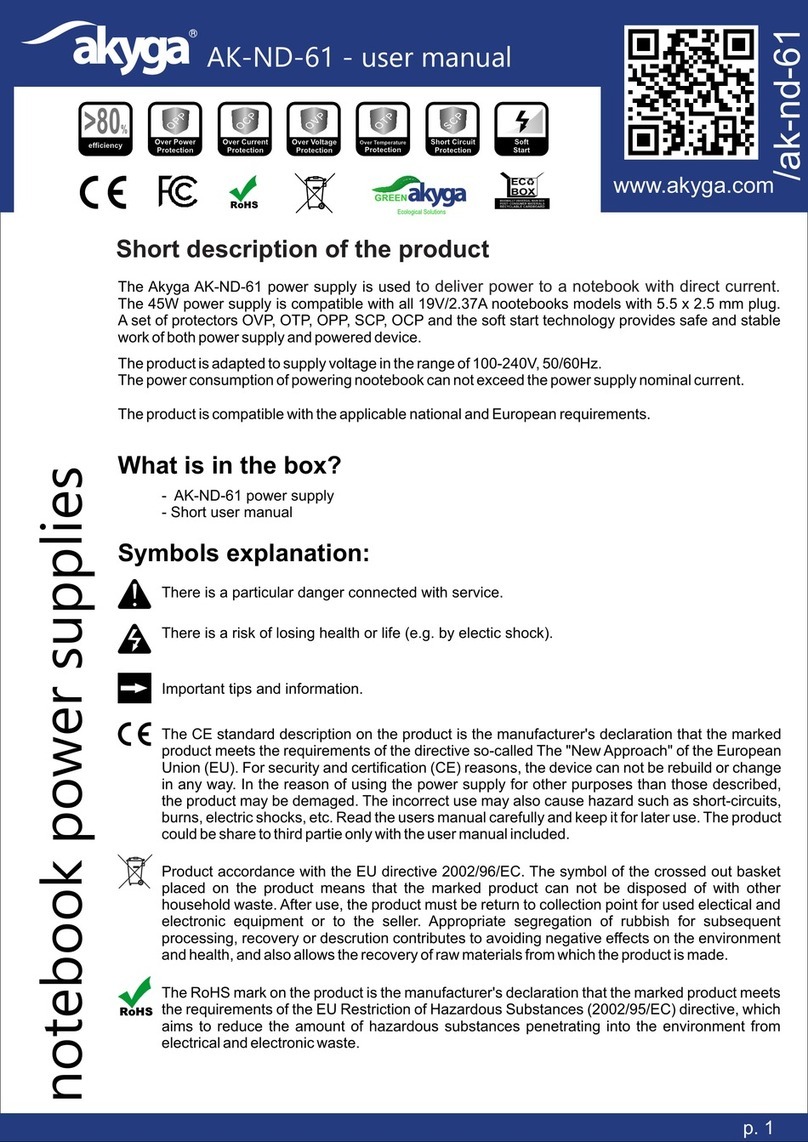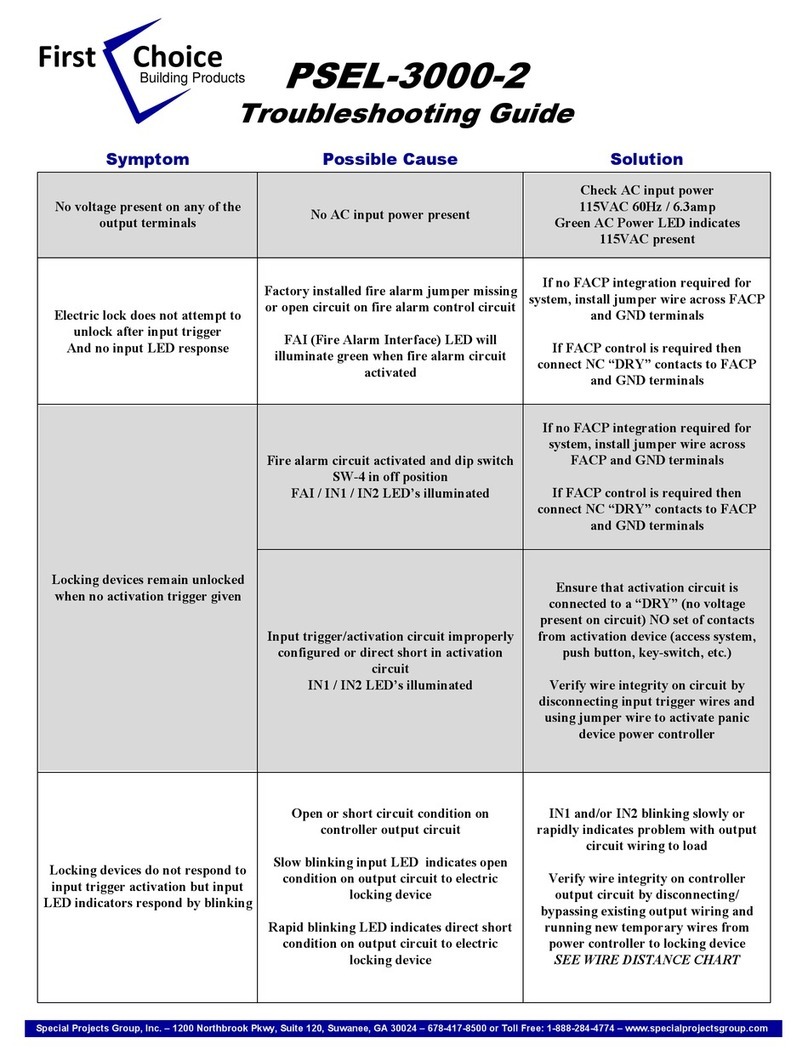Kohler PowerWAVE 8000DPA RI (S2) Series User manual

User Manual
PowerWAVE 8000DPA ST (S2)
(10–20 kVA/kW)
Parallelable up to 400 kVA/kW

TS_616_08 PW8000DPA ST (S2) UK User Manual 21/4/22

TS_616_08 PW8000DPA ST (S2) UK User Manual 21/4/22
Document Control
Useful Contacts
All product, product specifications and data are subject to change without notice to improve reliability, function, design or otherwise.
Kohler Uninterruptible Power Ltd. has taken every precaution to produce an accurate, complete and easy to understand specification
document and will assume no responsibility nor liability for direct, indirect or accidental personal or material damage due to any
misinterpretation of, or accidental errors, in this manual.
© 2019 Kohler Uninterruptible Power Ltd.
This manual may not be copied or reproduced without written permission of Kohler Uninterruptible Power Ltd.
ISSUE DATE REVISION SUMMARY
TS_616_00 11/10/16 New Issue (Revision 00).
TS_616_01 20/01/17 Updated clearances and battery cabinet details
TS_616_02 21/03/17 Updated ST120 terminal details
TS_616_03 04/03/18 Added external MBP interlocking details to Chapter 7, and corrected spelling
TS_616_04 11/10/18 Updated ST-40 photographs in chapters 2 and 3.
TS_616_05 27/02/19 Kohler rebranding
TS_616_06 18/02/19 Updated specification standards
TS_616_07A Not issued
TS_616_08 21/04/22 Maintenance Section updated
www.kohler-ups.co.uk Kohler Uninterruptible Power Ltd. web site
ukservice.ups@kohler.com Service department – booking service, fault reporting etc.
uktechnicalsupport.ups@kohler.com Technical queries
uksales.ups@kohler.com Hardware sales
ukservicesales.ups@kohler.com Extended warranty agreements etc

TS_616_08 PW8000DPA ST (S2) UK User Manual 21/4/22

TS_616_08 PW8000DPA ST (S2) UK User Manual 21/4/22 I
Table of contents
Safety 1
1.1 Description of symbols used in this manual 1
1.2 User precautions 1
1.3 Declaration of Safety conformity and CE marking 2
General Description 3
2.1 General introduction 3
2.1.1 Reliability and quality standards 3
2.2 PowerWAVE 8000DPA ST (S2) DPA system 3
2.2.1 UPS cabinet model range 3
2.2.2 Advanced design features 4
2.2.3 System expansion using parallel cabinets 5
2.3 Functional description of operation 7
2.3.1 UPS Power module internal operation 7
2.3.2 UPS module operational states 8
2.3.3 UPS system operation 10
2.4 Module component identification 12
2.5 PowerWAVE 8000DPA ST (S2) Communications 17
2.5.1 Standalone cabinet communication 17
2.5.2 Parallel cabinet communication 18
2.5.3 UPS Interface boards 19
2.6 Module control panel 21
2.6.1 Module mimic LED indicators 21
2.6.2 Operator buttons 22
2.6.3 LCD Power management display 23
2.7 Optional system control panel 25
2.7.1 Display header bar 26
2.7.2 Mimic diagram – system level 27
2.7.3 Module selection screen 28
2.7.4 Home screen 30
Installation Planning 32
3.1 Introduction 32
3.2 Environmental and mechanical planning 32
3.2.1 Environmental considerations 32
3.2.2 Installation 32
3.2.3 Clearances 33
3.3 Electrical and cabling planning 35
3.3.1 General requirements 35
3.3.2 Cable and fuse sizing 36
3.3.3 Parallel cabinet cabling recommendations 43
3.3.4 External maintenance bypass 44
3.4 Battery configuration 45
3.4.1 Common / Individual battery cabling 45

II TS_616_08 PW8000DPA ST (S2) UK User Manual 21/4/22
Installation 46
4.1 Introduction 46
4.2 Taking receipt of the UPS 46
4.2.1 Reporting transportation damage 46
4.2.2 Local transportation 47
4.2.3 Storage 47
4.3 Unpacking 48
4.3.1 Removing the standard UPS packaging (cardboard container) 48
4.3.2 Removing the alternative wooden crate packaging 49
4.3.3 Batteries 49
4.4 Power cabling 50
4.4.1 Safety notes 50
4.4.2 Power connections 50
4.4.3 Connecting the power cables (single-feed input) 53
4.4.4 Connecting the power cables (dual-feed input) 53
4.4.5 Connecting the UPS output cables 53
4.4.6 Connecting the battery 54
4.5 Remote monitoring and control facilities 55
4.5.1 PW8000DPA ST communications interface 55
4.6 Installation completion 55
Operation 56
5.1 Introduction 56
5.1.1 Operating procedure summary 56
5.1.2 General warnings 56
5.2 How to start the UPS system from a fully powered-down condition 58
5.3 Operating in ECO (on bypass) mode 60
5.3.1 How to power-up the UPS system and operate in ECO (on bypass) mode 60
5.3.2 How to transfer to ECO (on bypass) from on-line (on inverter) mode 60
5.3.3 How to transfer to on-line (on inverter) from ECO (on bypass) mode 61
5.3.4 How to Turn OFF the UPS system when operating in ECO (on bypass) mode 61
5.4 How to transfer the load to the maintenance bypass 62
5.5 How to shut down the complete UPS system 64
Maintenance 65
6.1 Introduction 65
6.2 User responsibilities 65
6.3 Battery testing 66
Troubleshooting 67
7.1 Alarms 67
7.2 Module control panel 67
7.3 Troubleshooting table 68
7.4 Contacting service 68
Options 69
8.1 Customer communications 69
8.1.1 Customer control inputs (X1) 70
8.1.2 Dry port outputs (X2) 72
8.1.3 Serial RS232 Computer interface – USB & JD1 (Smart Port) 72
8.1.4 Network interface card slots 73
8.2 UPS Monitoring and automated control software 74
8.2.1 The importance of UPS management 74
8.2.2 SNMP monitoring software 74

TS_616_08 PW8000DPA ST (S2) UK User Manual 21/4/22 III
8.2.3 WAVEMON UPS monitoring and control software 74
8.2.4 PowerREPORTER™ management software 75
Specification 77
9.1 Mechanical characteristics – UPS Cabinet 77
9.2 UPS Module characteristics 78
9.3 Battery Data 79
9.4 Standards 80
9.5 Communication Options 80
9.6 Multi-cabinet configuration 80

IV TS_616_08 PW8000DPA ST (S2) UK User Manual 21/4/22

TS_616_08 PW8000DPA ST (S2) User Manual 21/4/22 1
1Safety
1.1 Description of symbols used in this manual
1.2 User precautions
WARNING: The warning symbol is used where there is danger of an electrical shock, equipment damage or
personal-injury.
CAUTION: The caution symbol is used to highlight important information to avoid possible equipment
malfunction or damage.
WARNING: Keep this manual with the UPS for future reference.
WARNING: The UPS and peripheral equipment must be installed by suitably qualified and trained personnel
who are aware of the potential shock hazards.
WARNING: Do not attempt to install this UPS system until you have read and understood ALL the safety
instructions and hazard warnings contained in this manual.
WARNING: High leakage current!
Ensure that the UPS has been correctly earthed before you connect the mains power supply
WARNING: Do not apply electrical power (AC or DC) to the UPS before it has been commissioned by a fully
trained engineer authorised by Kohler Uninterruptible Power Ltd..
WARNING: All servicing must be performed by a Kohler Uninterruptible Power Ltd. approved engineer.
WARNING: Do not attempt to service the UPS yourself. You run risk of exposure to dangerous voltages if you
open or remove the UPS covers!
WARNING: Kohler Uninterruptible Power Ltd. will assume no responsibility or liability for accidents or injuries
due to incorrect operation or manipulation of the UPS or peripheral equipment.
CAUTION: The PowerWAVE 8000DPA ST is a Class A UPS product (according to EN 62040-3). In a domestic
environment the UPS may cause radio interference. In such an environment the user may be required to
undertake additional measures.

1: Safety
2TS_616_08 PW8000DPA ST (S2) User Manual 21/4/22
1.3 Declaration of Safety conformity and CE marking
The PowerWAVE 8000DPA ST UPS system is designed and manufactured in accordance with Quality Management
Systems standard EN ISO 9001. The CE marking indicates conformity to the EEC Directive by the application of the
following standards in accordance with the specifications of the harmonized standards:
• 2006/95/EC Low voltage directive
• 2004/108/EC Electromagnetic Compatibility directive (EMC)
Standards as reference:
• EN-IEC 62040-1
Uninterruptible power supply (UPS). Part 1-1: General and safety requirements for UPS's used in accessible areas
by end users.
• EN-IEC 60950-1
IT equipment. Safety. Part 1: General requirements
• EN-IEC 62040-2
Uninterruptible power supply (UPS). Part 2: EMC requirements
• EN-IEC 62040-3
Uninterruptible power systems (UPS). Part 3: Performance and test requirements
• 2011/65/EU
Restriction of the use of certain hazardous substances (RoHS) DIRECTIVE
The supplier's responsibility is excluded if the customer modifies, or intervenes with, this product in any way.
Product Standards Standards
Safety EC/EN 62040-1 EC/EN 60950-1
Electromagnetic Compatibility (EMC) IEC/EN 62040-2 (C1)
Emission cat. C3
Immunity cat. C3
IEC/EN 61000-4-2
IEC/EN 61000-4-3
IEC/EN 61000-4-4
IEC/EN 61000-4-5
IEC/EN 61000-4-6
IEC/EN 61000-4-8
IEC/EN 61000-2-2
Performance EN-IEC 62040-3
2011/65/EU
VFI-SS-111
RoHS EN50581:2012 EN50581:2012

TS_616_08 PW8000DPA ST (S2) User Manual 21/4/22 3
2General Description
2.1 General introduction
Congratulations on your purchase of the PowerWAVE 8000DPA ST (S2) Uninterruptible Power Supply system.
2.1.1 Reliability and quality standards
Using a unique modular construction, the PowerWAVE 8000DPA ST (S2) represents a completely new generation of
medium power, 3 phase UPS-Systems, incorporating the latest technological developments in power engineering. High
reliability, upgrade ability, low operating costs and excellent electrical performance are only some of the highlights of this
innovative UPS solution.
Kohler Uninterruptible Power Ltd. specialises in the design, building, installation and maintenance of Uninterruptible
Power Systems. This compact and powerful UPS is just one example of our wide range of state-of-the-art power
protection devices and will provide your critical equipment with a steady and reliable power supply for many years.
The criteria and methods we use in the design, manufacture, and maintenance of Uninterruptible Power Supply systems
are certified to International Standard ISO 9001/EN 29001 and ISO 14001. A full UPS Specification is provided in
Chapter 9 of this manual.
2.2 PowerWAVE 8000DPA ST (S2) DPA system
2.2.1 UPS cabinet model range
Figure 2.1 PowerWAVE 8000DPA ST (S2) module configuration
ST-40 Cabinet ST-60 Cabinet ST-80 Cabinet ST-120 Cabinet
2x modules
80 Batteries
3x modules
240 Batteries
4x modules
No Batteries
6xmodules
No Batteries
ST-200 Cabinet
10x modules
No Batteries

2: General Description
4TS_616_08 PW8000DPA ST (S2) User Manual 21/4/22
The PowerWAVE 8000DPA ST (S2) is a truly flexible, modular UPS system designed around 10 kW or 20 kW UPS power
modules. Up to ten UPS modules can be installed in a range of purpose-designed, free-standing cabinets, as shown in
Figure 2.1. The UPS cabinet is rated according to the maximum number of 20kW modules that it can house – i.e. 40 kW,
60 kW, 80 kW, 120 kW and 200 kW. The 40 kW and 60 kW cabinets contain the UPS batteries but the 80kW, 120 kW and
200 kW models require external batteries which are usually contained in a purpose-designed battery cabinet that is
installed as close as possible to the UPS cabinet. A range of matching battery cabinets is available.
2.2.2 Advanced design features
Decentralized Parallel Architecture (DPA)
The PowerWAVE 8000DPA ST (S2) system features Decentralized Parallel Architecture (DPA) paralleling technology that
provides N+x redundancy without introducing a single-point-of-failure. Each power module is a fully functional, self-
contained UPS that includes an individual battery charger, power inverter, bypass, CPU, control panel and separate
battery configuration; making it a completely autonomous operating unit.
The outputs from all the modules fitted in a UPS cabinet are connected in parallel at the cabinet’s output terminals, and the
electronics built into each module’s control system ensures that:
• The UPS modules equally share the load current.
• The inverter/bypass load transfer operation is synchronised such that, for example, if the operator selects ‘bypass’
mode the static switch in ALL the modules change over in unison.
• The UPS modules are always frequency-synchronised to each other – and to the bypass supply (when present).
Note: The parallel control mechanism is applied on a ‘master’/ ‘slave’ basis in which one module (usually
module 1) is set as the ‘master’ module and the remaining modules as ‘slaves.’ If the ‘master’ module shuts
down, the next module in the chain will take over the ‘master’ role automatically.
Hot swappable modules
Although the illustrations in Figure 2.1 show fully populated UPS cabinets, thanks to the UPS module’s advanced
Distributed Parallel Architecture (DPA) design it is possible to operate the PW8000DPA ST system with just a single
module fitted – additional module(s) can then be installed to expand the system capacity as needed, without needing to
shut down the system or transfer the load to the bypass supply.
This ‘hot-swappable’ design similarly allows a UPS module to be exchanged during UPS operation without disrupting the
load supply – but of course this depends on the system redundancy and the load demand at the time the exchange takes
place.
Input booster technology
The PowerWAVE 8000DPA ST (S2) UPS module’s advanced booster technology results in an input power factor of 0.99
with a harmonic content of <4.5% THD (10KW module) and <3% THD (20KW module). This enhances the system
reliability and minimises the winding losses of any generator or transformer connected to the UPS input, which in turn
reduces the generator/transformer costs. It also overcomes the need for an input harmonic filter, resulting in further
savings.
Cabling and fusing costs are also reduced as a result of the high input power factor due to the low reactive power
consumption.
In summary, the benefits of the UPS module’s high input power factor are:
Key Point: All the modules fitted within a UPS cabinet must be of the same rating.
• reduced cable losses • reduced heating of transformers and generators
• no over-sizing of generators required • no false circuit breaker tripping and malfunction
• no erratic operation of sensitive connected loads • no resonance with power factor correction capacitors
• low input harmonic currents

TS_616_08 PW8000DPA ST (S2) User Manual 21/4/22 5
2: General Description
Flexible battery management
This equipment employs flexible battery charging management which avoids premature deterioration of battery life and
provides preventive failure diagnostics.
The major benefits are:
• AC-ripple free battery charging due to a dc-dc charger separated from the rectifier and inverter.
• Wide range of number of battery blocks (30-50 blocks of 12V; depending autonomy times).
• Wide UPS input voltage operating window extends the battery life due to fewer discharge cycles.
• Battery discharge protection caused by load jumps.
• Proactive battery protection from false manipulations and inadequate charging voltages.
• Proactive battery failure detection thanks to Advanced Battery Diagnosis (ABD) algorithm.
• User selectable battery tests.
• Optional temperature compensated charging to enhance battery life.
2.2.3 System expansion using parallel cabinets
Some UPS applications present a low initial power requirement which increases over time as the application grows; and it
is therefore essential that the installed UPS system can be expanded to meet the growing demand without compromising
the existing load. This requirement is well met with the ‘hot swappable’ nature of the PowerWAVE 8000DPA ST (S2) UPS
power modules just described, which allows additional module(s) to be inserted into a vacant slot in an existing cabinet
when needed; however, it is also possible to further increase the UPS system capacity by connecting the outputs of
several UPS cabinets in parallel.
When two or more UPS cabinets are connected together all the UPS modules within the cabinets are effectively paralleled
– for example a UPS system comprising three fully populated ST-120 cabinets will contain 18 fully paralleled UPS
modules offering a system capacity of 360 kW.
Note: If a system expansion requires an additional cabinet to be installed, the system will have to be shut down while the
cabinet is being electrically connected.
The maximum number of PW8000DPA ST cabinets that can be paralleled is shown in the table below.
Parallel control in a multi-cabinet UPS system
A parallel cabinet system requires the same degree of inter-module control concerning synchronisation, load sharing,
bypass switching etc. as described for the modules operating in an individual cabinet. In order to achieve this a parallel
communication bus, carrying all the necessary parallel control signals, is connected between the cabinets as shown in
Figure 2.7. The parallel control mechanism still relies on a ‘master’/ ‘slave’ relationship between the modules fitted in the
various cabinets and it is usual for UPS module 1, fitted in cabinet 1, to be set as the ‘master’ module.
Note: For reasons described later, the cabinet containing UPS module 1 is designated as being the ‘master cabinet’
Key Point: When planning a multi-cabinet system, it is not necessary to fully populate one cabinet with UPS
modules before installing the next cabinet. For example, if it is known at the outset that the eventual load is likely
to reach 300 KW it makes good design sense to install and cable-up four ST-80 cabinets and equally distribute
the number of initially required modules between them.
ST-40 ST-60 ST-80 ST-120 ST-200
Number of UPS power modules per cabinet 2 3 4 6 10
Parallel cabinets per system 4 4 4 3 2
Max number of UPS power modules per system 8 12 16 18 20
Max system capacity (without redundancy) 160 240 320 360 400

2: General Description
6TS_616_08 PW8000DPA ST (S2) User Manual 21/4/22
Figure 2.2 Parallel system control
‘Capacity’ parallel system
When a system is described as being a ‘capacity system’ it implies that the potential full load requires ALL the paralleled
UPS modules to be operational – i.e. if one module trips off line due to a fault, the remaining modules will be unable to
supply the load demand and will automatically transfer the load to the bypass supply, where it will no longer be protected
against supply aberrations.
‘Redundant’ parallel system
If a system is designed with module redundancy it must contain at least one UPS module over and above that necessary
to power the applied load.
Using the example given above, four fully populated ST-80 cabinets (16 modules = 320 kW) would present one redundant
module for a 300 kW load. Under normal circumstances with all 16 power modules on-inverter they would each provide
18.75kW when full load is applied, but if one module fails or is taken off-line, the remaining 15 modules can sustain the
load by each providing their rated 20 kW output.
Clearly, the ability to lose one UPS module yet still supply the rated load with processed, backed-up power significantly
increases the overall system reliability.
Note: A parallel system operating with one redundant module is known as an ‘N+1’ system.
STATIC
SWITCH
INVERTERRECTIFIER
Parallel Control Logic
UPS Module 06
CHARGER
STATIC
SWITCH
INVERTERRECTIFIER
ParallelControlLogic
UPS Module 07
CHARGER
ParallelControlLogic
UPS Module 08
ParallelControlLogic
UPS Module 09
ParallelControlLogic
UPS Module 10
U PS CABINET 2
STATIC
SWITCH
INVERTERRECTIFIER
Parallel Control Logic
UPS Module 01
CHARGER
STATIC
SWITCH
INVERTERRECTIFIER
ParallelControlLogic
UPS Module 02
CHARGER
ParallelControlLogic
UPS Module 03
ParallelControlLogic
UPS Module 04
ParallelControlLogic
UPS Module 05
U PS CABINET 1
Parallel Adapter Board
To JD 5 in UPSCABINET 3
JD5 JD6Parallel Adapter Board JD5 JD6

TS_616_08 PW8000DPA ST (S2) User Manual 21/4/22 7
2: General Description
2.3 Functional description of operation
This section describes:
• A block-diagram level explanation of the UPS module internal operation (see paragraph 2.3.1).
• The various operational states of the UPS module (see paragraph 2.3.2).
• UPS system-level operation – ‘ON-LINE’ versus ‘OFF-LINE’ UPS system operation (see paragraph 2.3.3).
2.3.1 UPS Power module internal operation
Figure 2.3 UPS module functional block diagram
UPS input/bypass mains supplies
Figure 2.3 illustrates separate UPS module input mains and bypass mains supplies. These two inputs can be connected
to separate mains power sources or linked together at the UPS input power terminal blocks and fed with a single mains
supply source. Where the UPS is cabled for separate mains inputs it is described as having a ‘split-bypass’ input;
conversely, when the two mains inputs are linked together it is described as a ‘common-bypass’ input.
Rectifier (PFC controlled converter)
The rectifier converts the UPS input mains to a DC power source that can satisfy the inverter power demands at 100%
load. This is possible with a UPS input mains voltage range of -20% to +15%. This wide input voltage operating range
means that the battery is not called upon during substantial power dips (brown outs), which in turn maximises the UPS
battery life and availability. The rectifier uses leading-edge switched-mode techniques that result in a module input power
factor of almost unity over its complete operating range (0.99 at full rated linear load).
DC Boost converter
The DC boost converter converts the DC voltage connected to its input, from either the rectifier or battery, to a regulated
DC voltage that is required by the inverter to operate efficiently.
Battery charger
A multi-stage battery charger, powered from the DC boost converter regulated output, charges the battery whenever the
UPS input mains supply is available and the rectifier/boost converter is turned on. The charger uses an intelligent charging
profile to obtain the best battery charge/discharge performance to optimise the battery life.
Inverter
The inverter converts the regulated DC voltage applied to its input into a sinusoidal AC output that is suitable for
connecting to the load equipment. In addition to providing output voltage regulation, the inverter control logic also provides
various levels of overload protection, frequency regulation and synchronisation, and output voltage error detection.
AC/DC (PFC)
RECTIFIER
DC BOOST
CONVERTER
DC/AC
INVERTER
BATT. CHARGER
STATIC
SWITCH
UPS AC
Output
UPS
Bypass
Mains
UPS
Input
Mains
BATTERY
UPS MODULE
Input
Relay
Automatic
Batt. Switch
Output
Relay

2: General Description
8TS_616_08 PW8000DPA ST (S2) User Manual 21/4/22
In a parallel-module installation (i.e. where two or more UPS modules fitted to the frame) the inverter control logic also
ensures balanced load sharing between the on-line modules together with inter-module frequency synchronisation.
Static switch
The static switch provides a means of connecting the UPS AC output directly to the unregulated bypass mains supply.
Working in conjunction with the inverter and output relay, the static switch control logic is able to transfer the UPS AC
output (load) between the inverter and bypass supply without a break in the load supply. Load transfer between the
inverter and bypass can be selected manually from the operator control panel and takes place automatically following a
UPS fault that prevents the inverter from providing its correct output (including temporary overload situations).
Note: A brief load break will occur when transferring from bypass to inverter following a bypass supply failure, or if the
bypass/inverter are not synchronised when a transfer is demanded. (See ‘Off Line Mode’ in section 2.3.3).
Automatic battery changeover switch
If the UPS mains input supply fails, or undergoes a sustained dip (brownout), the automatic battery switch will close to
connect the battery to the DC boost converter input. This enables the inverter to continue its normal operation and
maintain the UPS output load supply from battery power.
2.3.2 UPS module operational states
Under normal circumstances the UPS module will operate in one of three states: On Inverter, On Battery or ON Bypass –
these are described below.
UPS ON-INVERTER mode
Figure 2.4 illustrates the UPS ON-INVERTER mode, which is usually considered the ‘normal’ mode of operation:
• The input relay is closed.
• The rectifier and DC boost converter are turned on to supply controlled DC power to the inverter input.
• The battery charger is operational and provides controlled battery charging.
• The inverter is operational and provides an AC output.
• The output relay is closed to connect the inverter output to the UPS AC output terminals to provide the load with
processed power.
• The static switch is off.
Figure 2.4 UPS ON-INVERTER
AC/DC (PFC)
CONVERTER
DC BOOST
CONVERTER
DC/AC
INVERTER
BATT. CHARGER
STATIC
SWITCH
UPS AC
Output
UPS
Bypass
Mains
UPS
Input
Mains
BATTERY
UPS MODULE
Input
Relay
Automatic
Batt. Switch
Output
Relay

TS_616_08 PW8000DPA ST (S2) User Manual 21/4/22 9
2: General Description
UPS ON-BATTERY mode
The UPS automatically changes to the ON-BATTERY mode if the mains input supply fails during normal operation:
• The rectifier is turned off.
• The automatic battery switch is closed.
• The battery discharges through the DC boost converter which remains fully operational and continues to provide
the inverter with its regulated DC input.
• The inverter continues its normal operation (the changeover to battery power is transparent to the inverter).
• The output relay remains closed.
• The battery charger is turned off.
• The static switch is off.
UPS ON-BYPASS mode
This mode can be selected by the operator as part of the system operating procedure. It is also entered following certain
fault occurrences such as a UPS output overload:
• The static switch is turned on to connect the load to the unregulated UPS bypass mains input.
Depending on whether or not the transfer to bypass was ‘selected’ or following a ‘fault’:
• The rectifier, boost converter and battery charger will remain active to maintain battery charging.
• The inverter may/may-not remain powered up and in operational readiness to be brought into use.
Note: When operating in this mode the load is not protected against any mains input supply disturbances or loss.
Figure 2.5 UPS ON-BATTERY
AC/DC (PFC)
CONVERTER
DC BOOST
CONVERTER
DC/AC
INVERTER
BATT. CHARGER
STATIC
SWITCH
UPS AC
Output
UPS
Bypass
Mains
UPS
Input
Mains
BATTERY
UPS MODULE
Input
Relay
Automatic
Batt. Switch
Output
Relay
Figure 2.6 UPS ON-BYPASS
AC/DC (PFC)
CONVERTER
DC BOOST
CONVERTER
DC/AC
INVERTER
BATT. CHARGER
STATIC
SWITCH
UPS AC
Output
UPS
Bypass
Mains
UPS
Input
Mains
BATTERY
UPS MODULE
Input
Contactor
Automatic
Batt. Switch
Output
Contactor

2: General Description
10 TS_616_08 PW8000DPA ST (S2) User Manual 21/4/22
UPS ON MAINTENANCE BYPASS
Figure 2.7 UPS ON MAINTENANCE BYPASS
Although the maintenance bypass switch is not fitted within the UPS module, the maintenance bypass mode of operation
is shown here for completeness. A maintenance bypass switch (IA1) is fitted to the UPS cabinet switch panel and, when
closed, it provides an alternative power path for the load which completely bypass the UPS module(s). This mode is
primarily used to maintain the load supply when it is necessary to completely shutdown the UPS cabinet for repair. The
maintenance bypass line is connected to the same unprotected supply source as that used by the static switch so for
reasons of load security the UPS should only be operated in this mode when absolutely necessary.
2.3.3 UPS system operation
Summary of UPS module operating modes
UPS installations are generally categorised as being either ‘ON-LINE’ or ‘OFF-LINE’ systems; and the PW8000DPA ST
can be configured to operate in either mode. The two systems are described below.
ON-LINE UPS system
An ‘ON-LINE’ system provides the highest degree of load protection, especially in the event of a mains supply disturbance
or complete failure, and we always recommended its use if the critical load (e.g. computer system) will not tolerate even a
very brief supply interruption.
When the PW8000DPA ST is used as an ‘ON-LINE’ UPS it is configured to normally operate in the ON-INVERTER mode,
as shown in Figure 2.4. In the event of a UPS input mains supply failure, the UPS changes to its ON-BATTERY mode
(Figure 2.5) without affecting its output supply – i.e the UPS will continue to provide its rated output running from battery
power and the changeover to battery operation is totally transparent at the UPS output.
If the UPS input mains supply returns when the module is operating on battery power the module will automatically revert
to normal ‘ON-LINE’ operation once the returning input mains supply is validated.
If the UPS input mains supply does not return when the module is operating on battery power, it will continue to provide its
rated output until the battery discharges to a low cut-off point, at which time the UPS will attempt to switch to its ‘on
bypass’ mode; however, if the bypass input supply is unavailable the module will shut down in a controlled manner. An
audible and visual alarm will warn the operator that the battery is discharging to enable any necessary intervention actions
to be carried out to safeguard the load integrity (e.g. initiate a data backup).
It is usual, especially in larger installations, to provide the UPS with an alternative input supply from a standby generator
which starts automatically following a mains supply failure. If such a standby UPS input power source is made available it
means that the batteries discharge only until the generator comes on-line. This not only avoids the UPS from eventually
shutting down due to discharged batteries but the short battery discharge period also increases the battery life cycle.
AC/DC (PFC)
CONVERTER
DC BOOST
CONVERTER
DC/AC
INVERTER
BATT. CHARGER
STATIC
SWITCH
UPS AC
Output
UPS
Bypass
Mains
UPS
Input
Mains
BATTERY
UPS MODULE
Input
Relay
Automatic
Batt. Switch
Output
Relay
MAINTENANCE
BYPASS

TS_616_08 PW8000DPA ST (S2) User Manual 21/4/22 11
2: General Description
Bypass supply and fault handling
If the UPS experiences an internal fault during ON-LINE operation, the inverter is turned off and the static switch transfers
the load to the bypass supply automatically and without interruption provided the inverter and bypass supplies are
synchronised (Figure 2.6). In the event of an output overload the inverter is designed to supply the load for a limited time,
depending on the overload severity, and if the permitted time is exceeded the load is transferred to the static bypass. The
additional power available from the bypass supply will attempt to clear the overload but if it persists it will ultimately rupture
the bypass supply fuses. If the overload condition clears while operating on bypass the load will be transferred back to the
inverter and the UPS will return to its normal ON-LINE mode of operation.
OFF-LINE (On stand-by) UPS system operation
When the PW8000DPA ST is used as an ‘OFF-LINE’ UPS system it is normally operated in its ON BYPASS mode
(Figure 2.6) with the load supplied via the bypass line. However, the rectifier, DC boost converter and battery charger are
all operational to maintain battery charging, and the inverter section is turned on but operating on standby.
In the event of a bypass supply failure, the inverter is immediately brought on line and the load is transferred from the
bypass line to the inverter by the static switch within 3 to 5 milliseconds. If the UPS bypass and mains inputs are
connected to separate sources and the mains supply is still live when the transfer takes place then the UPS will operate in
its ON-LINE mode. However, if these supplies are connected to a common source the UPS will immediately revert to its
ON-BATTERY mode (Figure 2.5).
When the bypass supply returns to normal, the load is re transferred back to the bypass line and the inverter returns to its
standby operation.
Operating in this mode is slightly more energy efficient than operating in the ON-LINE mode due to the reduced rectifier
and inverter losses during normal system operation; and it is sometimes referred to as the ‘ECO’ (economy) mode.
However, this mode is recommended only if the connected load equipment can tolerate power interruptions of up to
3~5 ms during the transfer period.
Control panel mimic indications
The module control panel mimic led indications for the ON-INVERTER and ON-BATTERY mode are shown below:
WARNING: The ON-LINE mode should always be used for critical load protection.
LINE 1
LINE 2 BY PASS
INVERTER
BATTERY
LOAD
LINE 1
LINE 2 BY PASS
INVERTER
BATTERY
LOAD
On-Inverter On-Bypass

2: General Description
12 TS_616_08 PW8000DPA ST (S2) User Manual 21/4/22
2.4 Module component identification
Figure 2.8 ST-40 Cabinet front view
UPS Module 2
UPS Module 1
Batteries
Power Connections
(see page 51)
UPS Interface Connections
(see page 17)
Module Control Panel
(see page 21)
Maintenance Bypass Switch (IA1)
Module 2 Battery Isolator (F4-2)
Module 1 Battery Isolator (F4-1)
Other manuals for PowerWAVE 8000DPA RI (S2) Series
1
This manual suits for next models
1
Table of contents
Other Kohler Power Supply manuals




